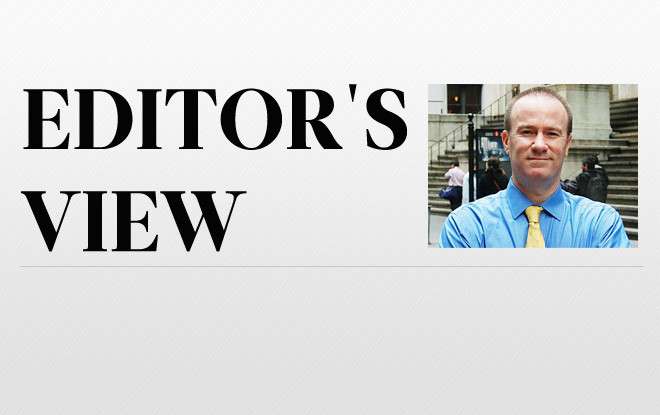That was the whole of the e-mail blasted out to the newsroom by Bloomberg News’ New York bureau chief on January 3, 2001, mere seconds after the Federal Reserve cut its benchmark federal-funds rate by half a percentage point to 6%.
The Fed’s surprise move, made between scheduled meetings, was the first rate cut after a series of hikes had pushed up the lending rate from 4.75%, and it was a sure sign the central bank was serious about getting out in front of economic weakness.
As a corporate-bond reporter for Bloomberg in January 2001, I was one of the several hundred or so recipients of my bureau chief’s three-word, all-caps communique. The e-mail itself wasn’t necessarily meant to inform journalists of the rate cut itself, as a quick glance at the Bloomberg terminal would have done that; rather, it was meant to remind everyone that the cut was a very big deal. Interest rates are a proxy for the cost of money, and changes in rates hold implications for most every financial-market participant — so the rate cut mattered, whether you covered bonds, stocks, commodities, or companies.
Why do I take this stroll down memory lane?
I do so because May saw a mini-rout for bonds. The Federal Reserve didn’t make any moves, but increasing speculation that the Fed may wind down its bond-buying program before too long spooked the market. After lingering near historic lows for what seemed like a very long time, yield on the benchmark 10-year U.S. Treasury note increased by half a percentage point within a few short weeks, to 2.15% as of late May.
This turn of events struck me as a potential mirror image of January 2001. Is it the inflection point that many market participants say is inevitable, i.e. will rates climb higher from here to more ‘normalized’ levels, which could be a steep ascent of three or four percentage points?
That would present a significant headwind for the market. Higher borrowing costs put a damper on economic activity, as it costs more to start or expand a business. Less economic activity drags down corporate earnings, which are the basis for stock valuations. A faltering stock market makes investors from Wall Street to Main Street ‘feel’ less wealthy, suppressing consumer spending and in turn, economic activity. Lather, rinse, repeat.
There is a sunnier side to rising interest rates. Everyone knows rates can’t stay at rock-bottom levels forever, and while there is some pain associated with the climb, higher rates are a sign that underlying economic activity is seen as sturdy enough to withstand it. Higher rates would eventually help fixed-income investors, plus it would give central banks ammo to cut rates again, should economic weakness make that necessary.
But ultimately, while every market participant, operator and observer can opine about the trajectory of interest rates, only time will tell whether May’s market move is the start of a secular rise in rates, or just a false start.
I witnessed a plethora of instances of the latter kind toward the end of my 2000-2004 tenure as a Bloomberg bond reporter and editor, when 10-year yields mostly fluctuated around 4%. In fact, if I had a nickel for each time a corporate treasurer told me his or her company just sold bonds because it was an opportunistic time and rates are going higher, I’d have a lot of nickels.
I also recall a fund manager telling me his firm sold a large amount of bonds in response to the 10-year yield dipping to about 3.1%, which at the time was remarkably low. I’m not sure if he bought back when yields rebounded closer to 4%, because if he didn’t, he wouldn’t have been happy when the 10-year yield plunged much lower a few years later.
At any rate (pun intended), bond yields are arguably the most closely watched number in financial markets right about now. Will the other shoe drop?














